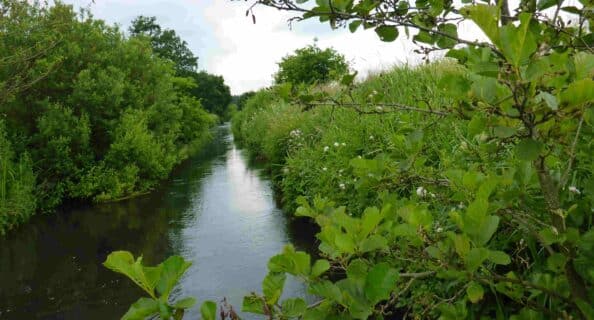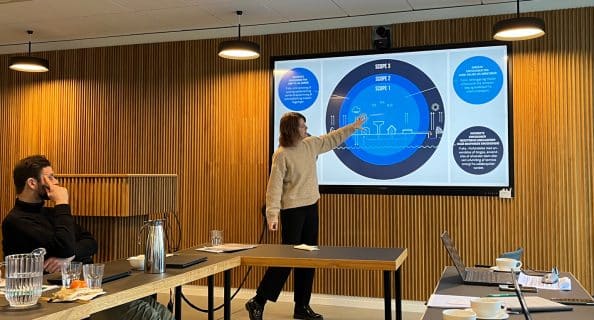Life Cycle Assessment is the methodology that makes our impact on climate and environment tangible and measurable, and it can help us address many of the challenges the water sector is currently facing.
If the methodology is applied across the sector, we can not only carry out individual projects more sustainably, but we can move the whole industry forward. However, this requires a joint LCA tool so that we all speak the same language when working with sustainability.
Sustainability has gone from being a buzzword to an inevitability across industries – but it is still a fluffy concept and unclear to many people. The challenge is that it can be difficult to specify what the concept means, how we measure it and how we can integrate sustainability into decision-making.
Life Cycle Assessment (LCA) is the methodology that can answer many of these questions. The method is not new, but the potential is unleashed, which is why we believe we need a new industry standard – as soon as possible.
 The methodology exists but is not used across the water sector
The methodology exists but is not used across the water sector
The method has its roots back in the 1960’s, when it became popular, for example in product development. In the Danish book “Miljørigtig projektering af af afløbssystemer” (in English: Environmentally sound design of drainage systems) published by Nordisk Wavin A/S in 1998 the following is stated: “In other words, environmentally sound design considers the environmental impacts throughout the entire life cycle of the drainage system, from ‘cradle to grave’. Environmental design and LCA are therefore two sides of the same coin“.
Until now, actors within the water industry have nevertheless focused a lot on greenhouse gas emissions from the operational phase, which is also at the center of the Danish Government’s “Action Plan for Circular Economy” from 2020. There is great potential in energy recovery and optimization of wastewater management and drinking water supply. Therefore, the Danish Environmental Protection Agency’s “Paris model for a climate- and energy-neutral water sector” is an important step towards becoming a sustainable water sector – but more needs to be done.
LCA eliminates tunnel vision
In the report “Sustainability 2021” (in Danish) Novafos estimates that operational emissions from facilities, vehicles and energy contribute with approx. 8,000 t CO2e, while facilities, procurement, disposal and other indirect emissions contribute with approx. 74,000 t CO2e. As such, there is an untapped potential in taking the whole life cycle into consideration and not limiting it to the operational phase.
In addition, we also need to avoid “carbon tunnel vision”, which means focusing solely on greenhouse gas emissions. When we use LCA to calculate a climate footprint, we automatically estimate other impacts such as ecotoxicity potential and consumption of fossil resources. This is because our activities impact the environment in many different ways through emissions to air, land and water, as well as through the use of resources.
Inspiration from other industries provides valuable knowledge
While it is obvious that LCA is an important step in the sustainable development of the water sector, it is unfortunately not easy to work with. Getting to grip with the rules, concepts and databases can quickly become overwhelming – and different players in the industry work with different approaches and methodologies.
Here, we can learn from other industries that are one step ahead: new buildings must comply with LCA requirements from January 2023, and the Danish Road Directorate requires an LCA for major construction projects. For both sectors, LCA tools (LCAByg and InfraLCA) already exist. This allows us to focus on creating better, more innovative solutions instead of discussing calculation methods and databases.
New industry standard to simplify and streamline workflows
Together with Vandcenter Syd, Envidan’s Development Manager Sarah Brudler developed a LCA tool for water systems, based on her PhD project from 2018. The tool brings together a great pool of knowledge from project managers, contractors and, most importantly, LCA experts and LCA research – all in one giant spreadsheet. Since then, the tool has been used in various drainage and climate adaptation projects at Vandcenter Syd. We encourage the industry to use this tool as a basis for developing an industry standard that can be used by utilities, consultants, and contractors in the water sector.
There is great potential in the broad application of an LCA tool across stakeholders: Once we start understanding our environmental impacts, we can develop benchmarks, guidelines and collect best practice examples. In this way, we can create a joint guideline for the sustainable agenda in the water sector.
Based on Sarah’s previous work, we are ready to develop an LCA tool that the whole water industry can collaborate on. We are already working closely with different actors in the industry to ensure that we meet different needs and bring in cross-sectoral knowledge. Moreover, we are working on further developing the Paris model together with the Danish Environmental Protection Agency, so we can ensure that the models and tools in the industry are coherent and complement each other.
Want to know more?
Feel free to get in touch with Sarah Brudler, Development Manager for Sustainability in Envidan.
 The methodology exists but is not used across the water sector
The methodology exists but is not used across the water sector


